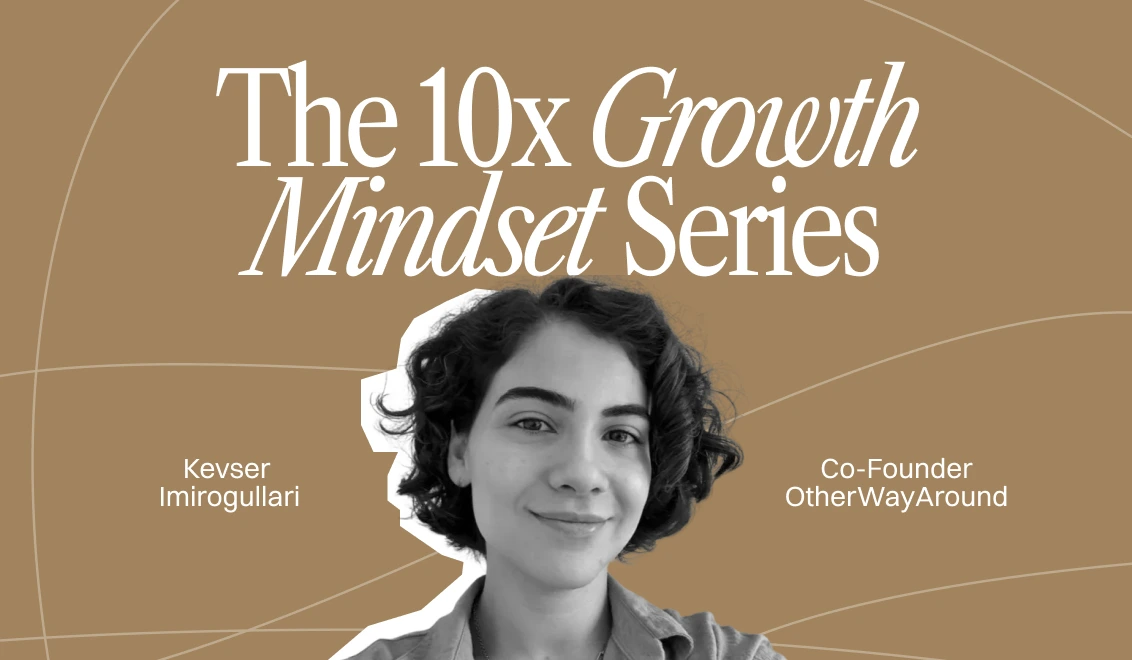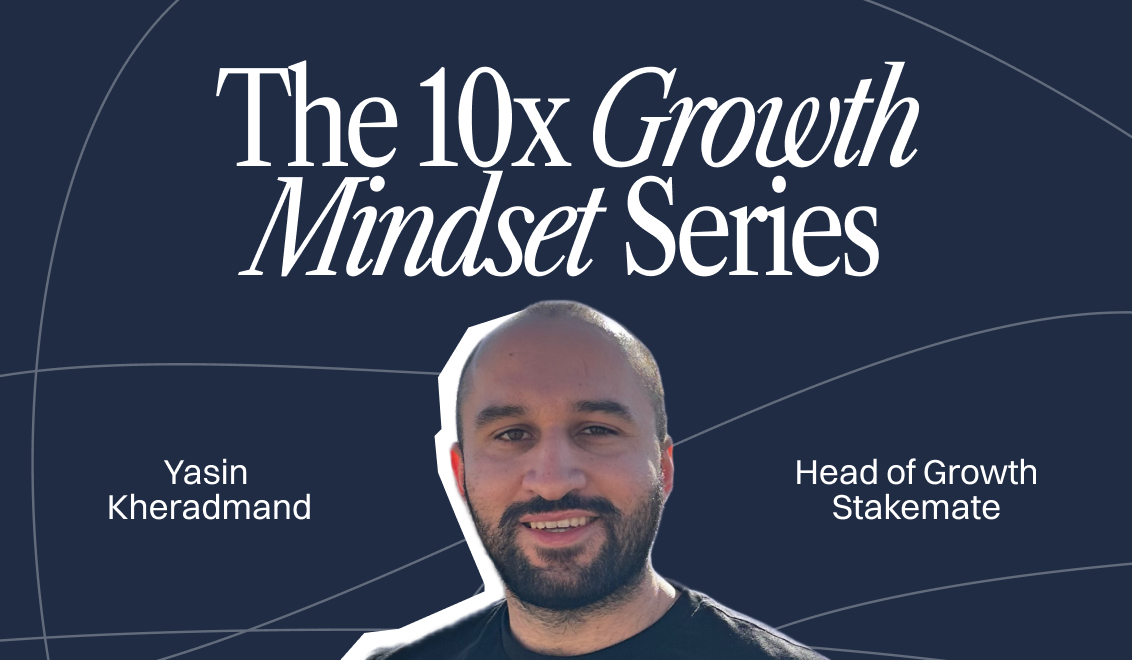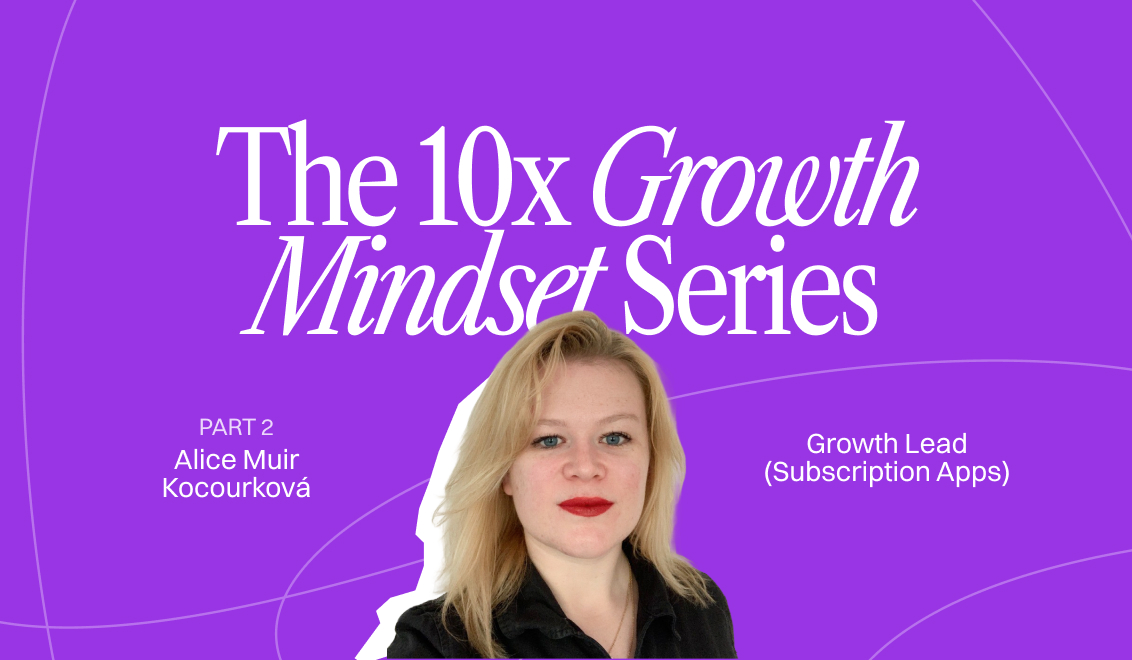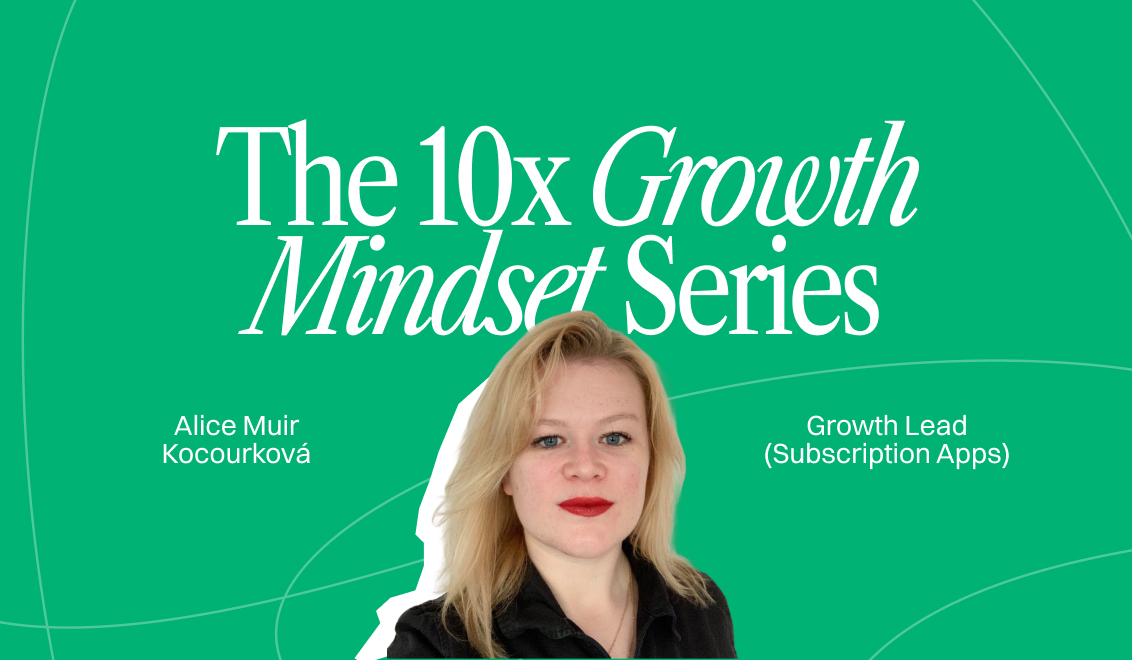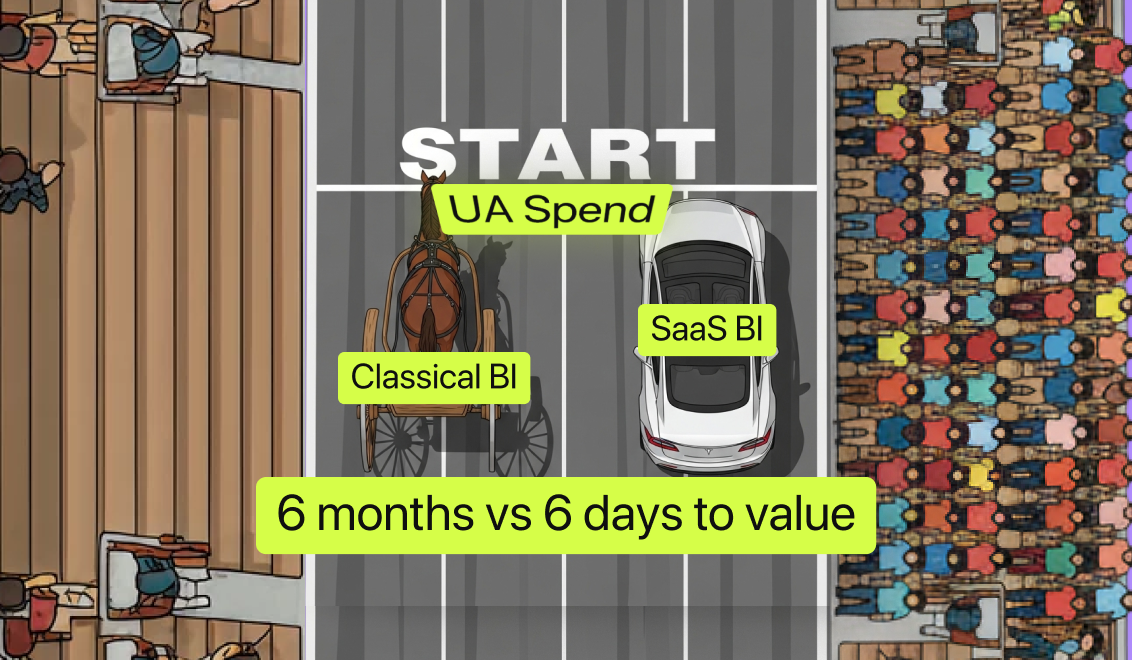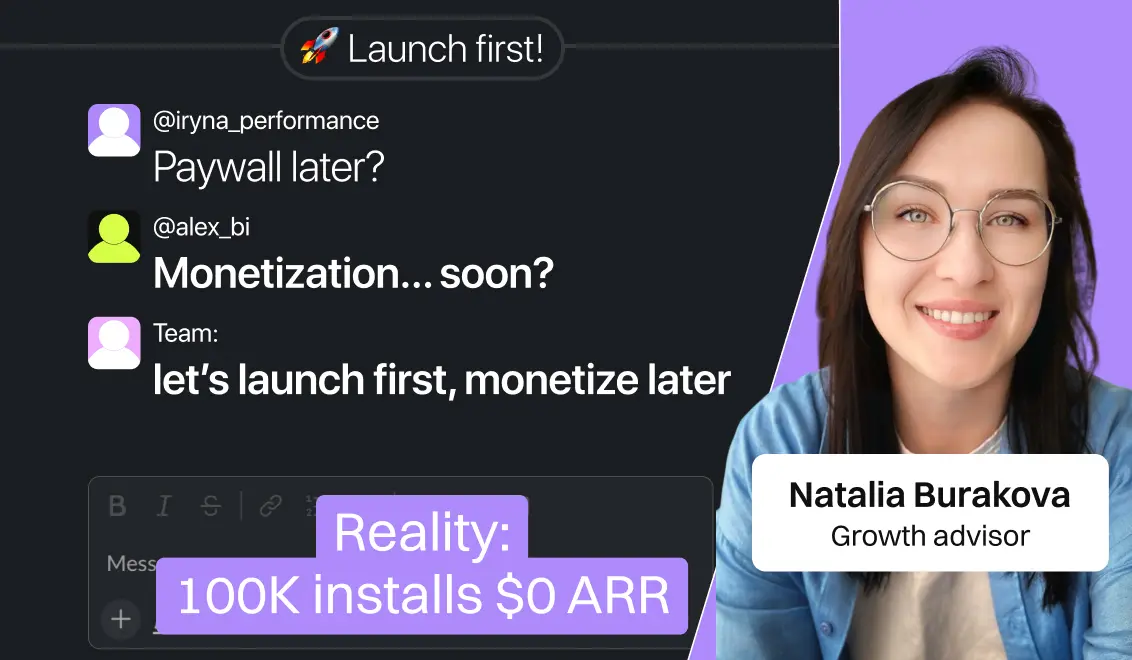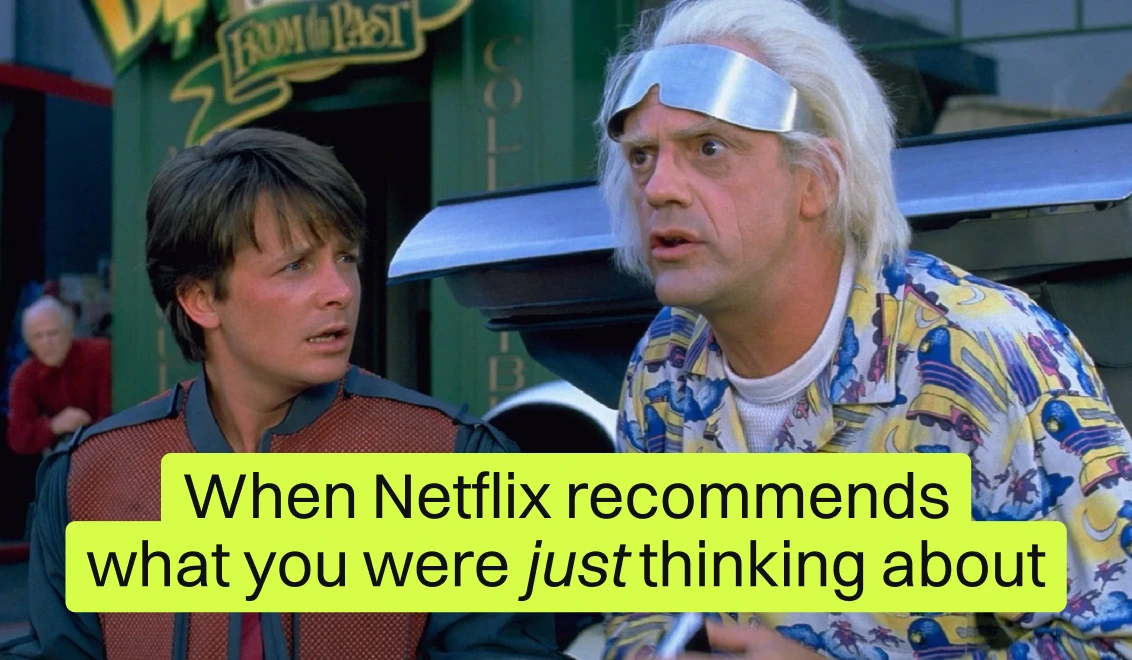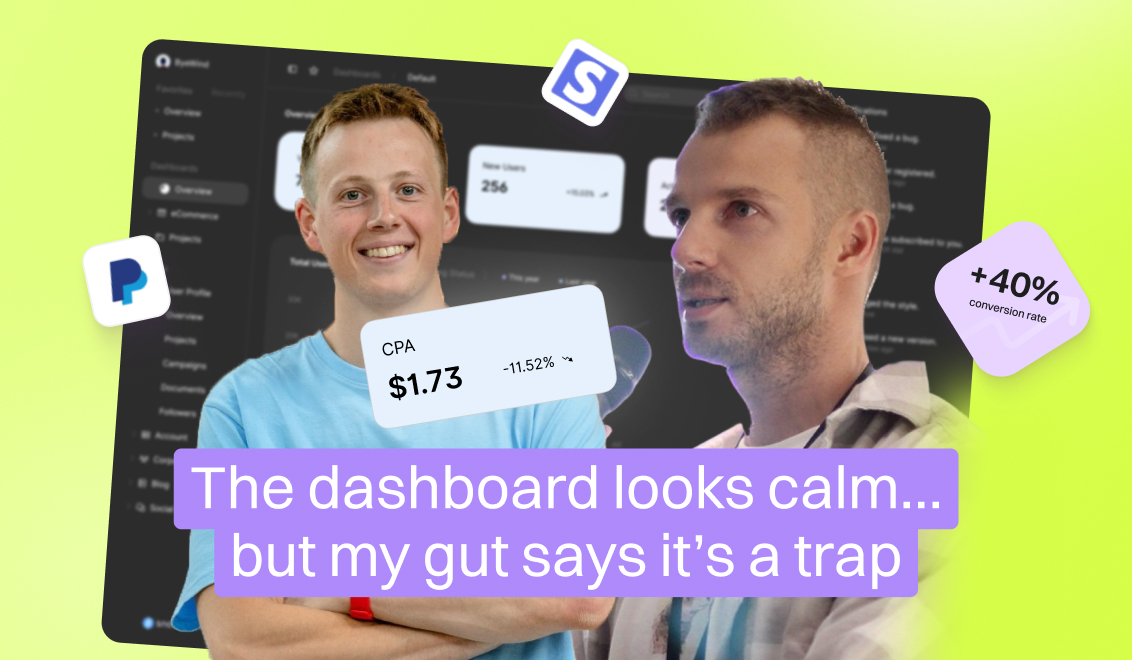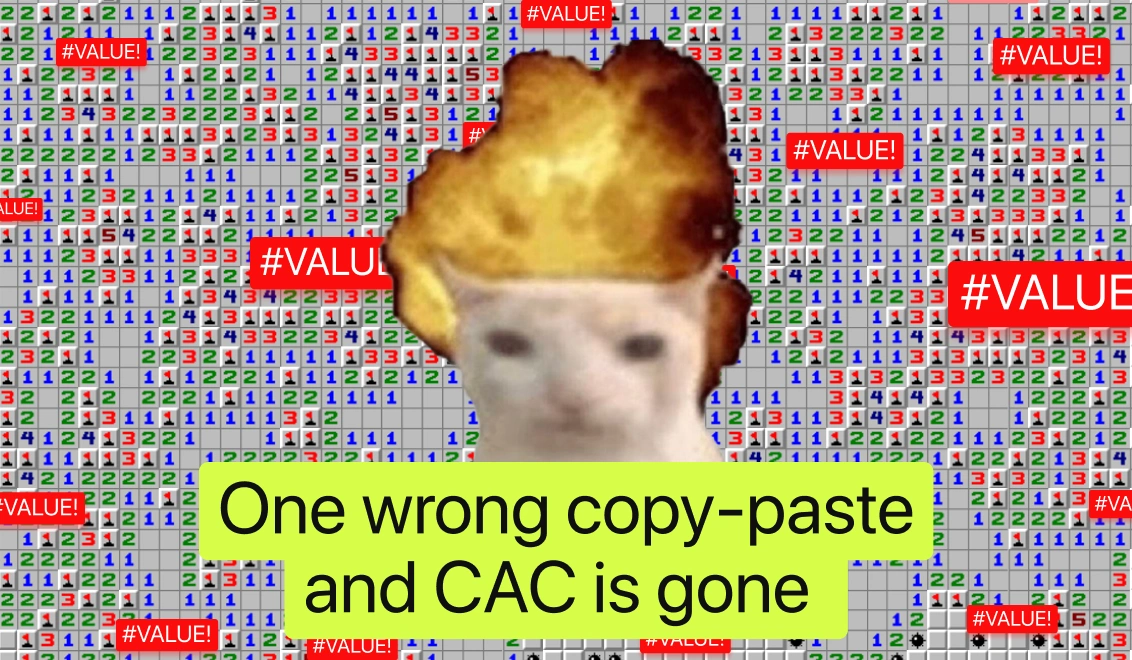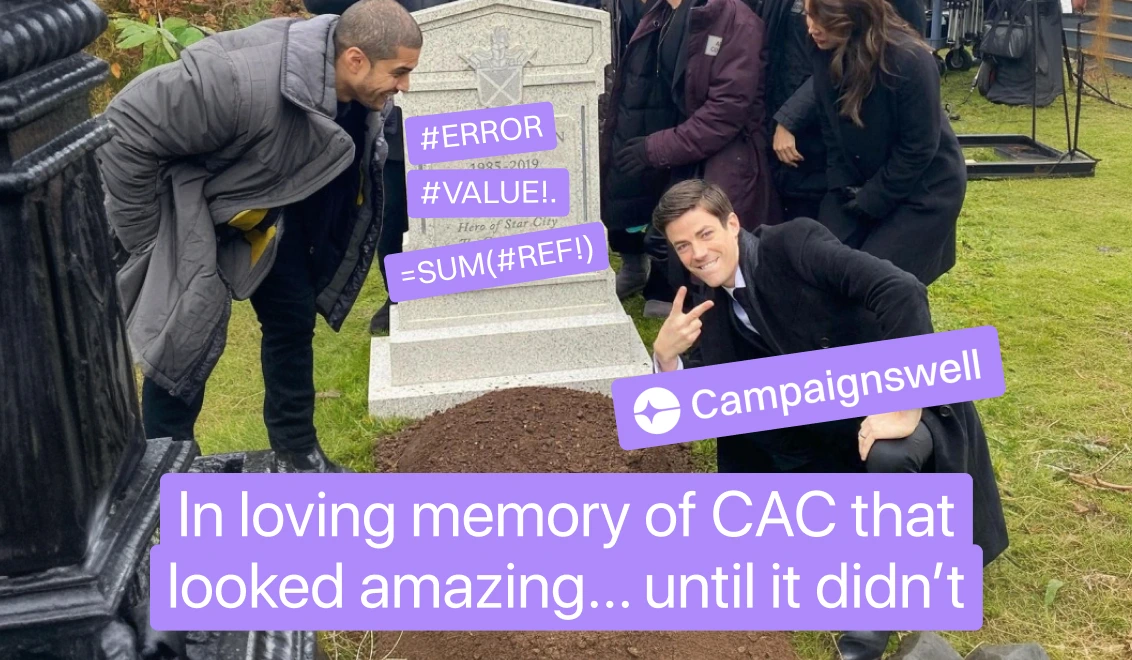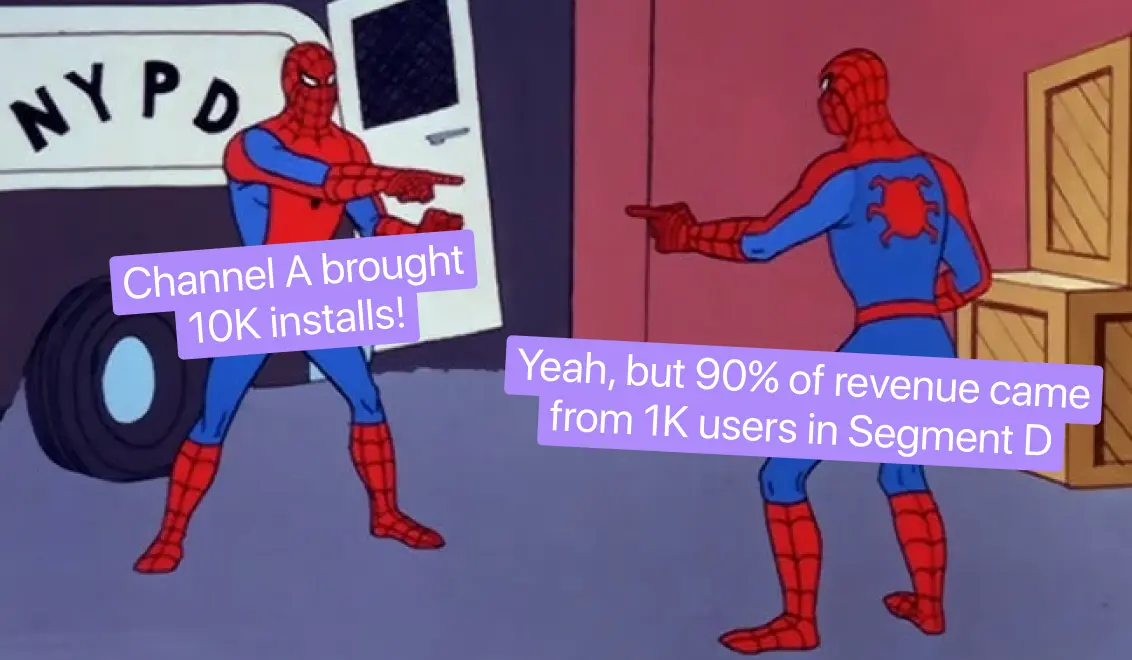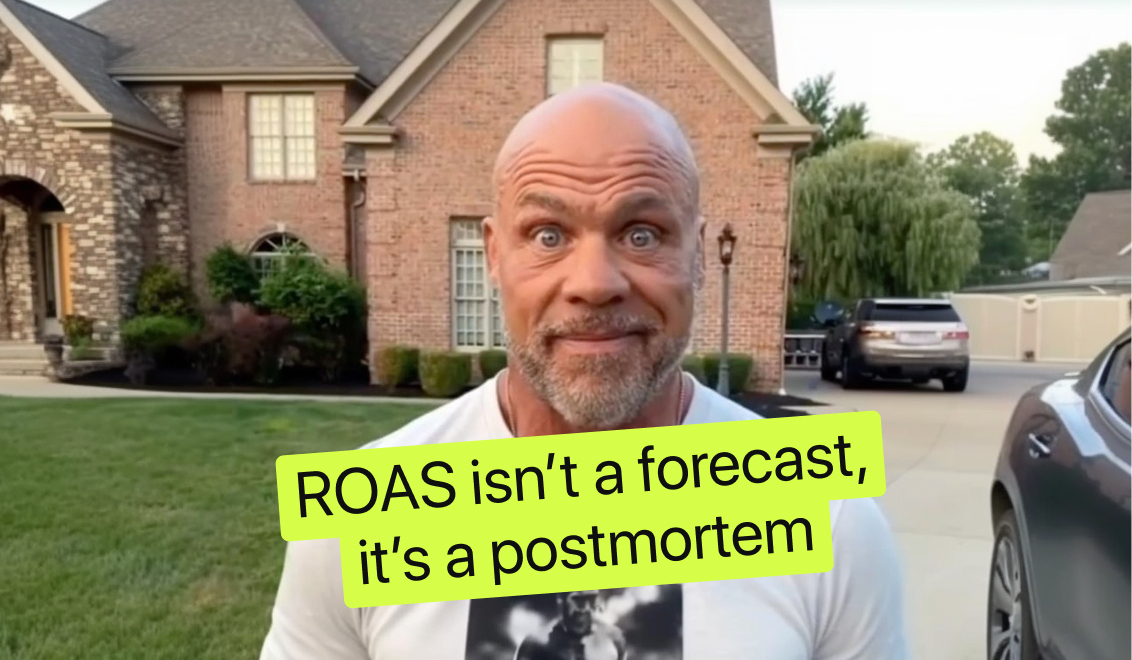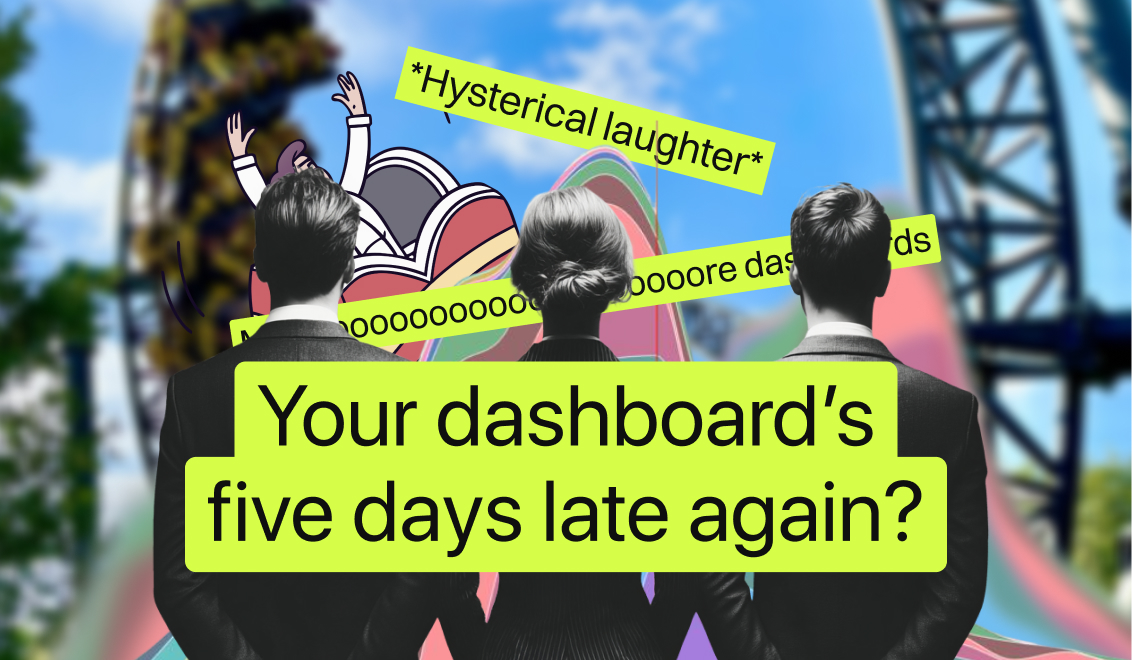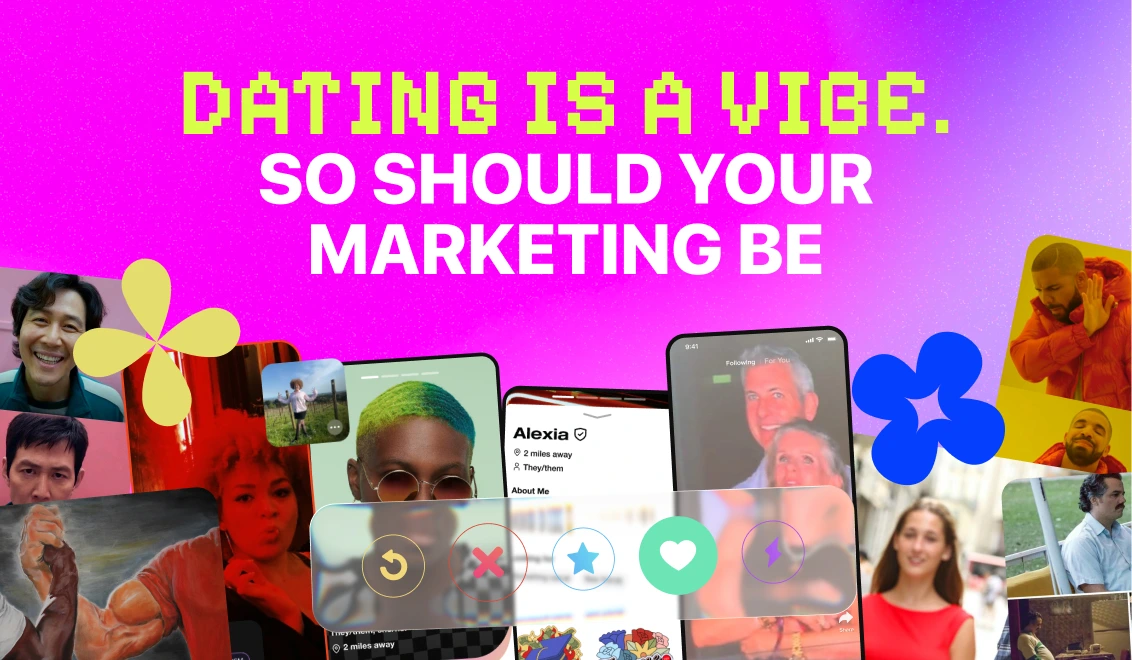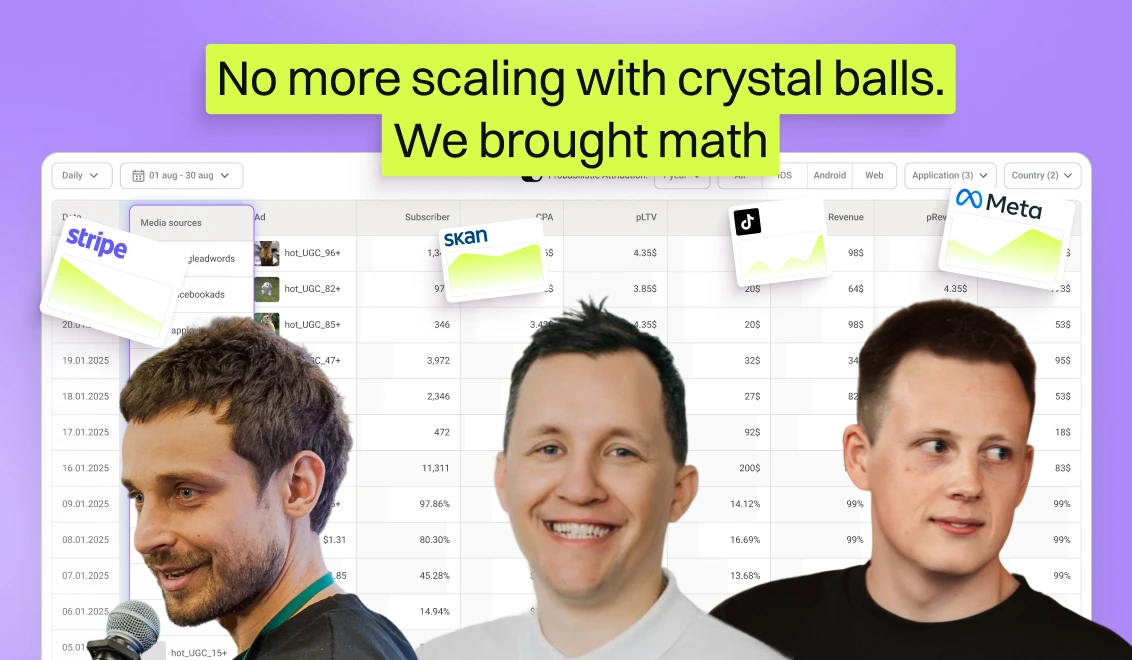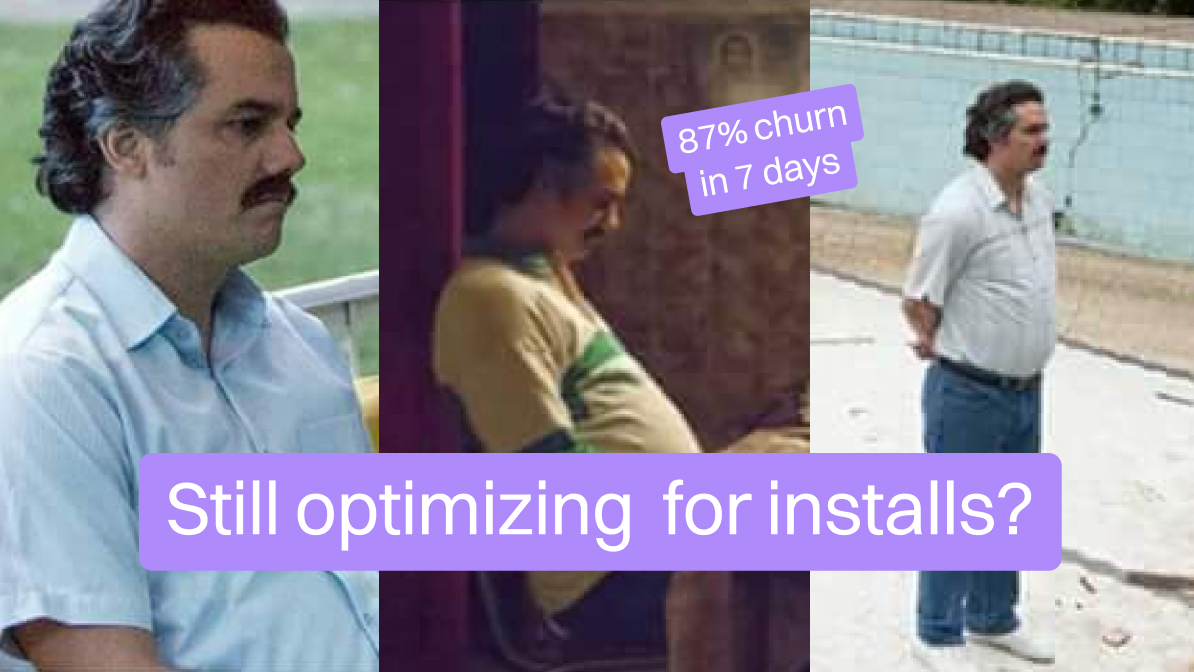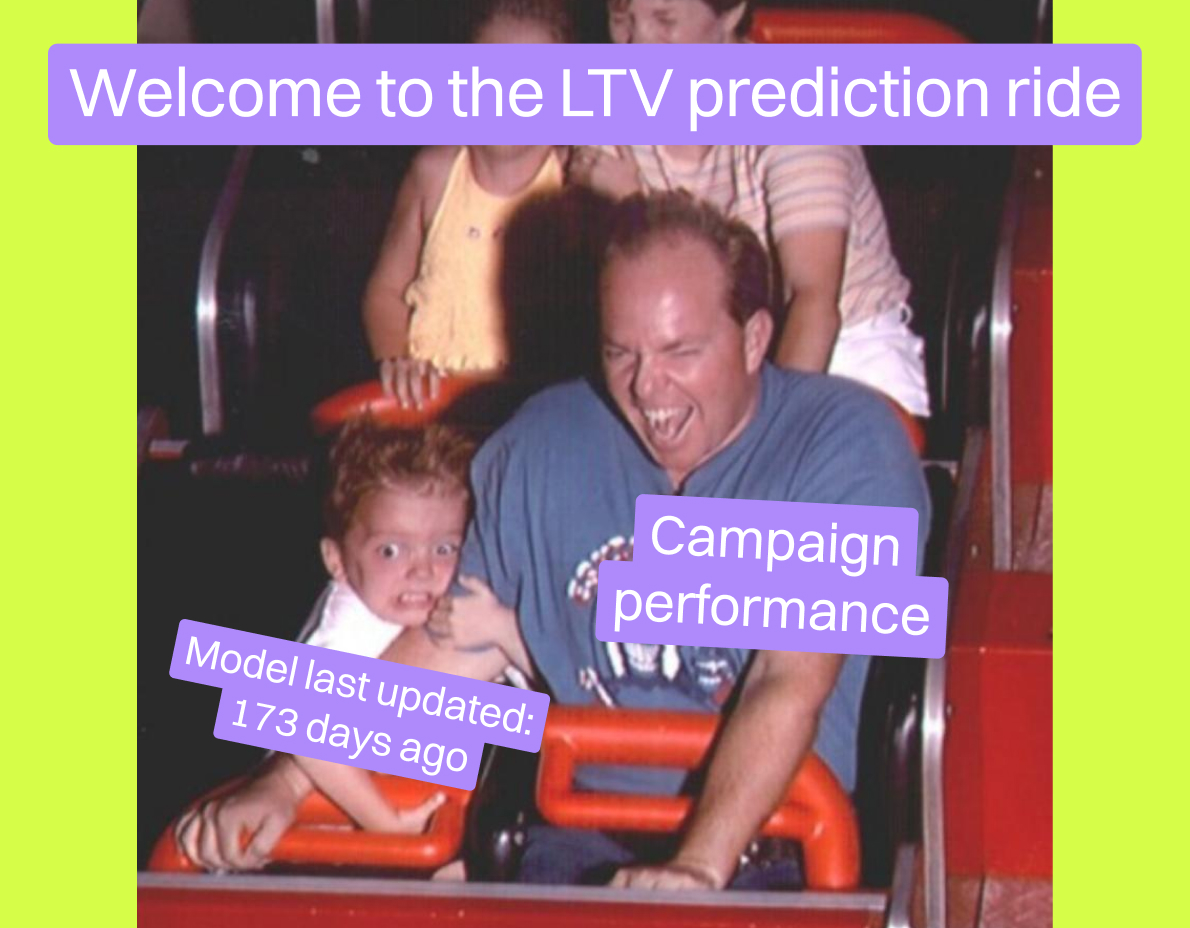71 takeaways mobile app publishers can use to improve monetization strategy and LTV
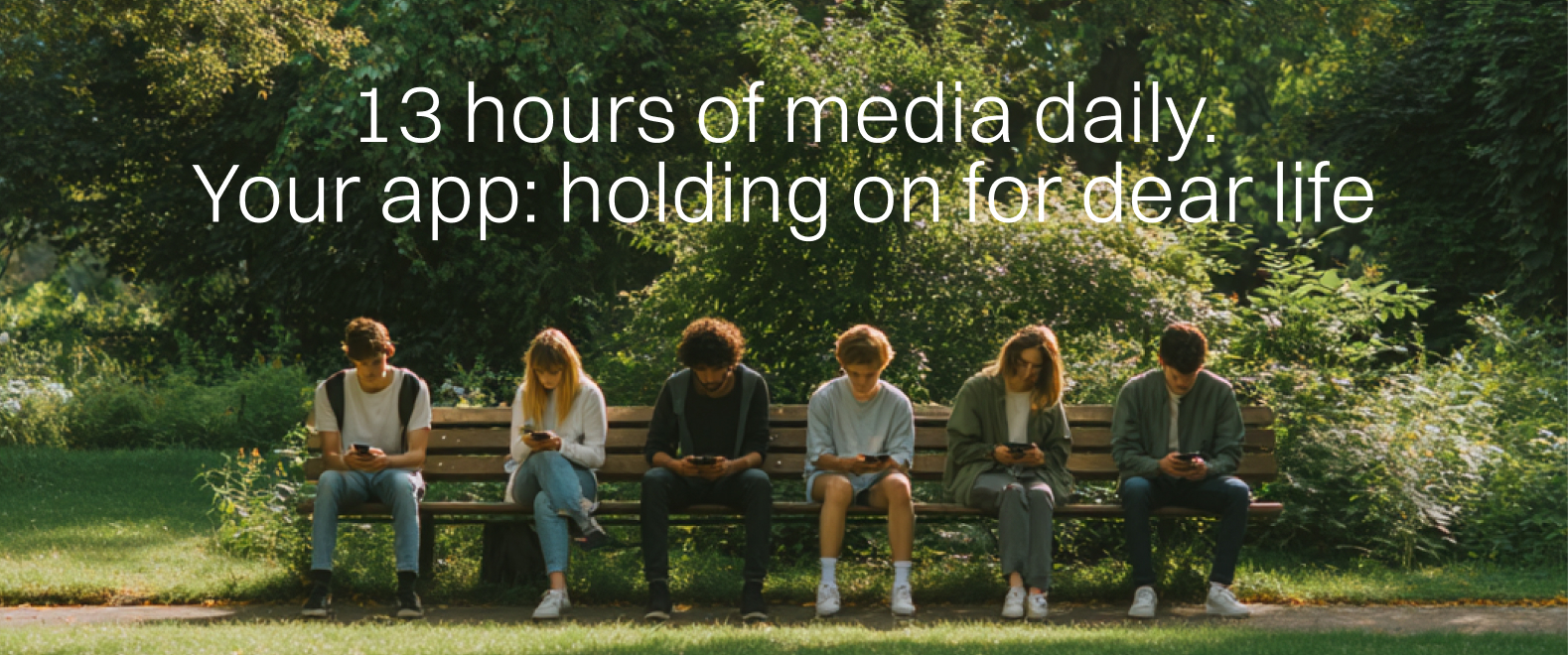
Mobile apps generate more sessions than ever. But most of those sessions don’t convert, don’t retain, and don’t pay. App users today are distracted across multiple formats, and the old metrics can’t explain the gap. Even the metrics look fine: DAUs, installs, even some in-app purchases but the revenue curve stays flat. Something’s off, and it’s not the product.
McKinsey ran the numbers and found the missing variable: attention. Not in the vague, “brand awareness” sense. We’re talking measurable focus and user intent, the kind that directly affects retention in mobile apps, monetization strategy, and lifetime value.
Their team mapped how attention quality drives outcomes across 20 media formats, showing that user behavior explains much of the monetization variance. We filtered it through the lens of mobile app monetization and pulled 88 insights that hit close to home, especially if you rely on freemium app models, premium features, or subscription revenue.
What you’ll get:
- Where app monetization stalls due to attention loss
- How video ads and in-app purchases perform under different focus levels
- What keeps app users engaged past install and what breaks that cycle
- How to align acquisition, engagement, and revenue using intent signals
If your app business depends on user acquisition and monetization efficiency, these patterns are worth knowing.
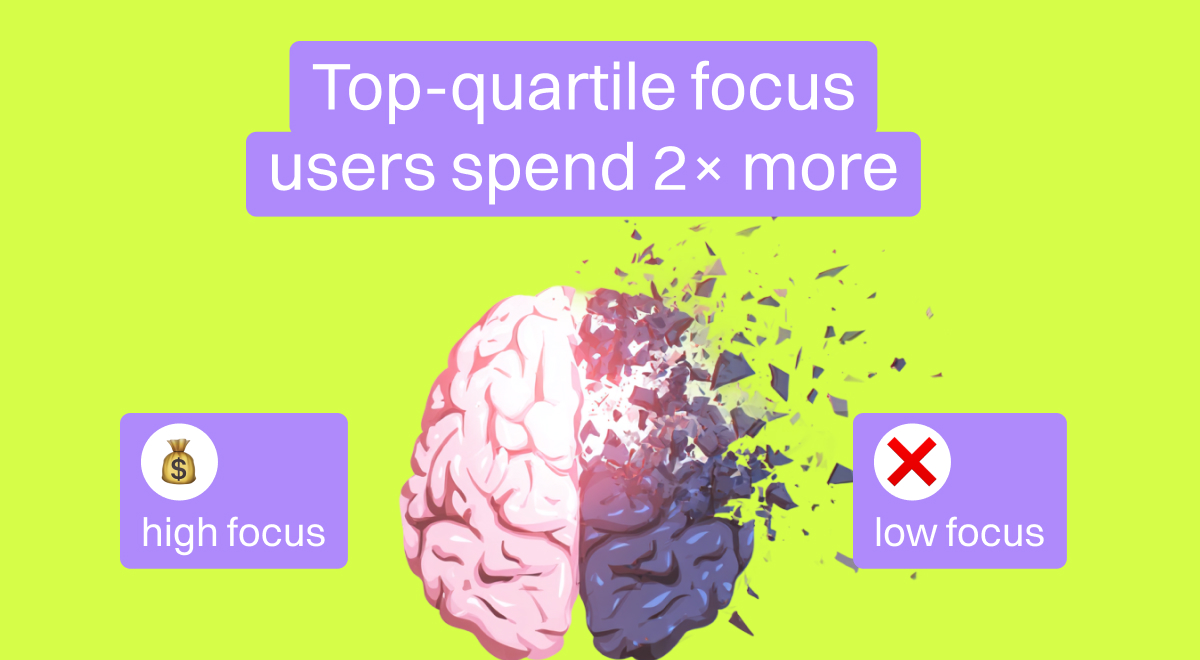
What to consider аbout user attention when shaping your app monetization strategy
Insight 1
Console/PC gaming achieves high focus (73%), close to live events (71-88%), due to its communal nature (40% of time spent with others), which helps retain existing users.
Takeaway: Mobile gaming, being more solitary, elicits lower focus, suggesting apps should incorporate social features (e.g., multiplayer modes) to boost user engagement.
Insight 2
Communal digital experiences correlate with higher focus; video games and streaming video are the most communal digital mediums (40% shared time), outperforming solitary ones like social video or mobile gaming.
Takeaway: Mobile apps can increase focus by enabling shared play or co-viewing to encourage users to engage more.
Insight 3
Younger app users (Gen Z) show high focus on video games, matching boomers' focus on newspapers.
Takeaway: Apps targeting Gen Z should prioritize interactive gaming to capture this undivided attention.
Insight 4
Overall, a 10% increase in average focus across mediums correlates with 17% higher spend; top-quartile focus app users spend twice as much as bottom-quartile.
Takeaway: Effective app monetization strategies should focus on minimizing distractions (e.g., multitasking) to boost user focus, increase revenue, and maximize earning potential.
Insight 5
Within video formats, focus decreases from streaming (57%) to cable to FAST TV to social video.
Takeaway: Mobile apps delivering short-form social video should aim for "lean-in" engagement to counter low focus.
Insight 6
Gen Z reports modestly higher focus on live sports via TV than in-person, but lower overall.
Takeaway: Mobile sports apps could enhance focus with interactive elements to improve overall customer experience, like real-time betting or community chats.
Insight 7
Books (digital/physical) achieve 81% high focus, second only to live events.
Takeaway: Mobile reading apps should emphasize immersive, distraction-free designs to rival this.
Insight 8
Multitasking is rampant: Americans spend 13 hours/day on media due to simultaneous use.
Takeaway: Given rampant multitasking (13 hours/day media use), mobile apps should detect and discourage secondary screen use to enhance focus metrics, supporting higher monetization potential.
Insight 9
Even within platforms, focus varies; some streamers inspire more focused viewing.
Takeaway: Apps need personalized algorithms to match user intent and boost retention.
Insight 10
Higher focus in digital realms comes from interactivity, app users respond better when they can participate rather than passively scroll.
Takeaway: Mobile apps like games or social should prioritize "lean-in" experiences over passive scrolling as part of their app monetization strategies, aligning with high-value jobs-to-be-done.
Insight 11
Gen Z favors mobile for long-form video (31% start on phone vs. 4% boomers).
Insight 12
No generational difference in book consumption (45-50% read monthly); mobile reading apps have cross-age appeal if they maintain high focus (81%) comparable to live events.
Takeaway: Apps should integrate immersive features like offline access, customizable reading environments, and minimalistic interfaces to sustain high focus across all age groups, maximizing their broad market potential.
Insight 13
Women derive more "consumer surplus" from books (3x more likely to favor them).
Takeaway: Reading apps can attract female app users with high-focus, love-oriented features mimicking book engagement.
Strategic takeaway for app publishers
In the digital realm, communal experiences correlate with focus. Video games and streaming video are the most communal forms of digital media (about 40 percent of consumption time is spent with others), eliciting higher focus than more solitary activities such as social video or mobile gaming.
Younger consumers aren’t less attentive; they just pay attention to different mediums. Gen Z consumers and baby boomers report the same level of average focus, but it’s split across different mediums: Gen Z consumers are highly focused when playing video games, using the same level of focus boomers exert while reading a newspaper.
Don’t chase format benchmarks. Instead, segment your ad inventory and pricing based on attention quotients across micro-contexts. That means pricing ads differently for a user in “lean-back” mode (streaming passively) for in app advertising vs. “lean-in” moments (gaming, focused reading).
Monetization strategy shouldn’t treat formats as fixed-value buckets. Instead, think in attention-per-session and intention-per-scroll.
Use this to redesign your ad monetization strategy:
- Shift underperforming formats into new UX contexts (e.g., add light interaction to passive video streaming).
- Blend ad formats not by revenue yield, but by attention volatility, add stable formats where intent spikes drop.
- For undervalued zones like news or education reading apps, create “focus zones” with premium ad experiences, don’t just copy video ad logic.
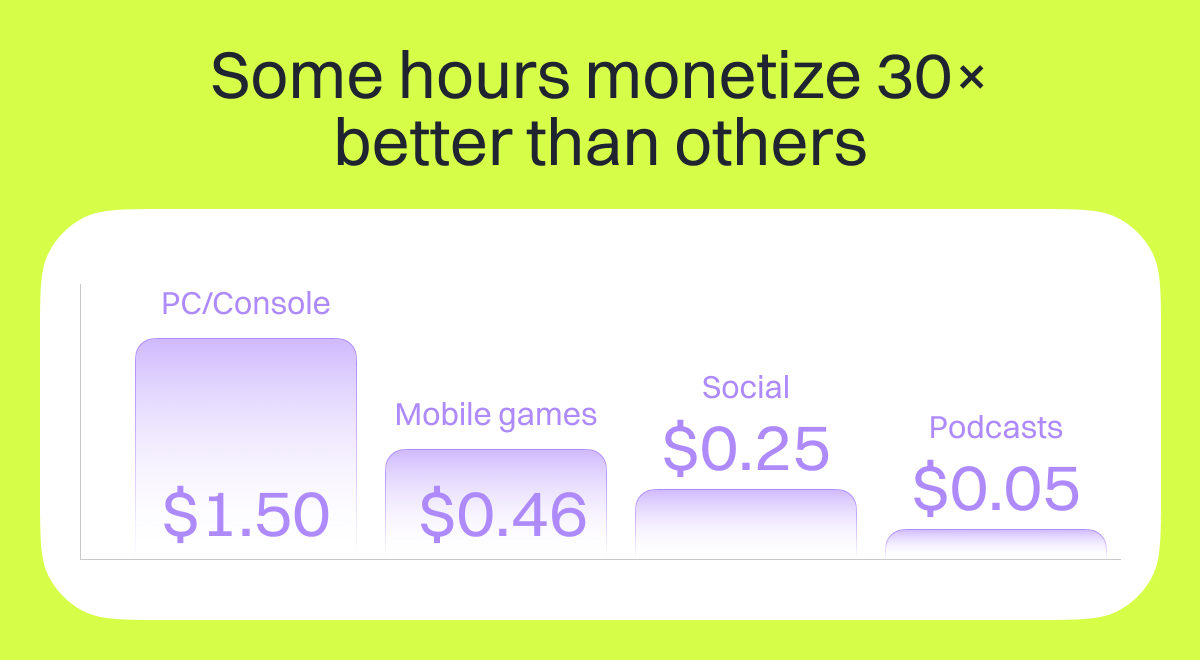
What mobile app publishers should know about format-level monetization trends
Insight 14
Mobile games monetize at $0.46/hour (mix of ads and in-app purchases), far below console/PC ($1.50/hour) but above social media ($0.25/hour) or podcasts ($0.05/hour).
Insight 15
Digital media is approaching the "efficient monetization frontier," where legacy formats are retreating.
Takeaway: Apps in gaming/social can generate revenue (projected 5-10% CAGR 2024-28) by optimizing attention quotients.
Insight 16
Attention quotient (focus + intent) explains 1/3 of monetization variance.
Takeaway: Apps undervalued in attention (e.g., streaming video undermonetized) have upside if they evolve advertising integration.
Insight 17
Social media garners $0.25/hour, growing 10% annually.
Takeaway: Mobile social apps should leverage this by matching ads to user intent (e.g., connection or light entertainment).
Insight 18
Gaming leads non-live monetization ($1.50/hour for console/PC, $0.46 for mobile); globally, console/PC is top in most markets, but mobile dominates in India.
Takeaway: Publishers in emerging markets should focus on mobile-first strategies.
Insight 19
Print overperforms in some markets (e.g., Japan: books $1.41/hour vs. streaming $0.16/hour).
Takeaway: Mobile news/reading apps can capture this by offering "education/information" intent with high focus.
Insight 20
Undermonetized mediums like streaming video and mobile games have high attention value.
Takeaway: Publishers can increase and generate revenue by introducing ads without disrupting focus.
Insight 21
74% of console/PC gamers are willing to view in-game ads for free play (vs. 76% mobile).
Takeaway: Mobile game publishers can increase the number of ads they show to players, as 76% of mobile gamers are willing to view in-game ads for free play; however, only 34% of them feel positively about it, so publishers should balance this expansion by using non-intrusive ad formats (like skippable or rewarded ads) and gathering user feedback to maintain a positive attitude and keep players engaged.
Insight 22
Podcasts monetize low ($0.05/hour), but 40% skip ads.
Takeaway: Mobile podcast apps should use video versions (70% watch) and speed-listening features to enhance user engagement.
Insight 23
Social video ads drive purchases for 25% of app users (higher in content lovers).
Takeaway: Apps should tailor ads to segments like community trendsetters who enjoy them 4.3x average.
Insight 24
Resonance (ad matching context) boosts performance.
Takeaway: Apps should align ads with focus/intent for app installs and better sales.
Strategic takeaway for app publishers
If your format shows high engagement but low revenue, don’t assume it’s underperforming, assume your monetization doesn’t match how app users interact with it. Start by mapping session types: when users are passive, focused, or exploring. Then test monetization models by context, not category. That’s where format value actually scales.
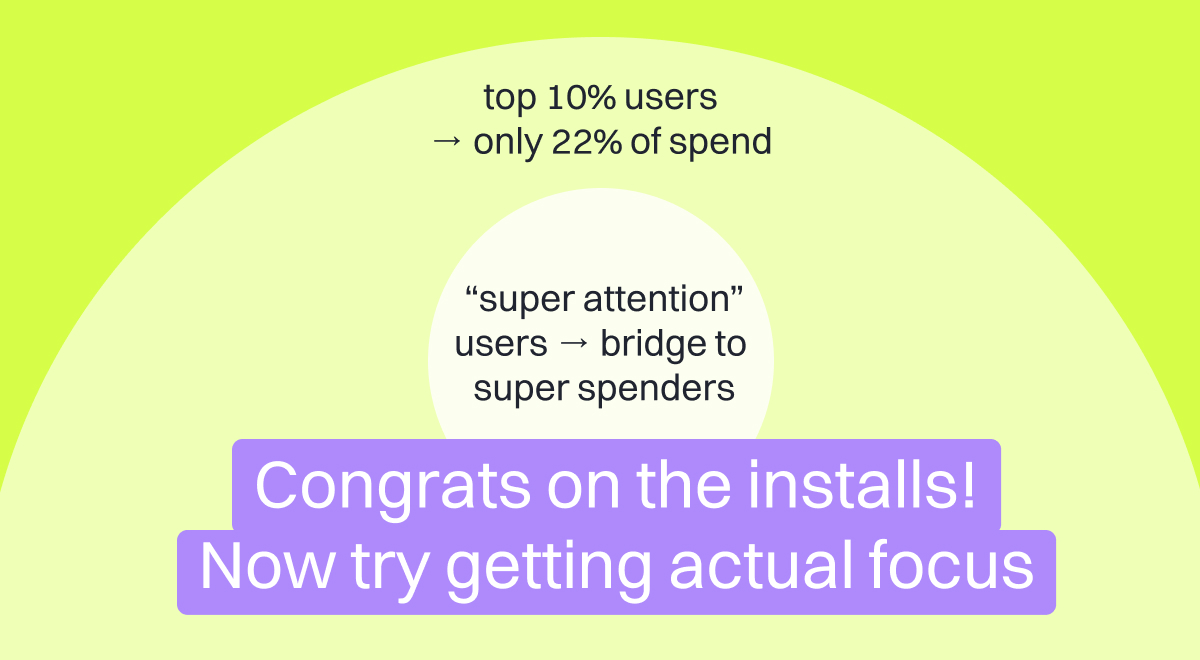
Targeting high-focus audiences for better app monetization outcomes
Insight 25
Super users (top 10% by time) account for only 22% of spend, but "super attention" app users (high focus) bridge to super spenders.
Takeaway: Mobile apps should target high-focus segments for premium features.
Insight 26
Millennials lead in premium-video commerce (3x boomers).
Takeaway: Mobile streaming apps should integrate shopping, as 50% of purchases relate to content viewed.
Insight 27
Gen Z leads music commerce via streaming (50% more likely than millennials).
Takeaway: Mobile music apps can boost monetization with artist integrations and personalized shopping.
Insight 28
Globally, video games monetize higher shares of discretionary spend in emerging markets (e.g., 6x in Brazil vs. US).
Takeaway: Mobile publishers should localize for high-growth regions like India/Brazil.
Insight 29
Emerging markets (Brazil/India/Saudi) have larger "content lovers" (20-27%) and "mobile scrollers" (17-21%).
Insight 30
India has the largest "interactivity enthusiasts" (39%), focused on mobile gaming.
Takeaway: Publishers should localize competitive, betting-integrated games to dominate this high-attention segment.
Insight 31
Japan overperforms in print (books $1.41/hour vs. streaming $0.16).
Takeaway: Mobile reading/news apps can emulate this by emphasizing education/information jobs-to-be-done for high monetization.
Insight 32
US leads in video monetization (2x other markets), reflecting a mature digital advertising ecosystem.
Takeaway: Mobile streaming apps should tap into this by offering premium, ad-supported video with top-tier streaming and smart recommendations. Focus on high-attention US users — content lovers and interactive viewers — to boost revenue potential and stand out in a fragmented global market.
Insight 33
Specialty streamers have 2x serial churn vs. mass-market.
Takeaway: apps in niche categories (e.g., fitness, education) should broaden content to retain subscribers and reduce cancellation.
Insight 34
Top streamer's rec engine is 20 points more effective (58% vs. 38%).
Takeaway: Apps need advanced AI recommendations, as 1.1% effectiveness gain correlates to 0.9% focus increase.
Insight 35
More high-demand titles (not concentration) boost attention.
Takeaway: mobile gaming/streaming apps should acquire diverse hits (75th+ percentile) to elevate jobs-to-be-done value.
Insight 35
Sports/news genres double focus vs. others.
Takeaway: Apps in these areas can command premium pricing.
Insight 36
Ad-supported streamers have lower focus.
Takeaway: Apps should offer tiered models, reserving high-attention features (e.g., ad-free) for premium tiers.
Insight 37
Gamers favor gen AI in development (75% support some use)
Takeaway: Mobile game publishers can integrate AI for non-core elements to improve quality without job losses.
Insight 38
66% of game time is spent on titles that are over one year old, indicating a strong preference for established games.
Takeaway: Mobile game apps should invest in longevity: regular updates, live events, strong community features. Keeps older titles sticky, engaging, and profitable long-term.
Insight 39
Game discovery via family/friends/social (top sources), influencers at 3%.
Takeaway: Apps can boost organic growth with shareable features, reducing marketing reliance.
Insight 40
Long-form social video drives more focus/love than short-form.
Takeaway: Mobile social apps should incentivize longer user generated content (e.g., news/tutorials) for higher retention and ad value.
Insight 41
50% of social shoppers scroll without buying.
Takeaway: Publishers can improve personalization in shops to convert browsers, testing per segment.
Insight 42
60% of users stay loyal to their music streaming app for over three years. That’s serious user retention. But here’s the twist: on the worst platforms, users are twice as likely to cancel.
Takeaway: To hold onto that loyalty, apps need anti-churn tools, think smart personalized playlists, exclusive content, and timely nudges before users drift. In a market where attention drives growth, sustained engagement is your advantage.
Insight 43
Gen Z and millennials want direct connection with artists. They’re twice as enthusiastic as older audiences about getting personalized communication from artists through apps, think exclusive updates, live messages, or behind-the-scenes content.
Takeaway: For mobile music apps, this is a chance to stand out: integrate features that bring fans closer to artists and keep younger users deeply engaged.
Insight 44
70% of podcast listeners prefer watching video versions of podcasts, indicating a strong demand for visual content alongside audio.
Takeaway: Mobile podcast apps should combine audio and video features, such as synchronized video playback and optional visual overlays, to enhance user focus and make users more accepting of ads, leveraging the added engagement that visual elements can provide.
Insight 45
27% speed up podcasts (50% more in young).
Takeaway: Apps need speed-resistant ads (e.g., visual/non-audio) to maintain revenue.
Insight 46
40% skip podcast ads.
Takeaway: Apps can use targeted, resonant ads (matching job-to-be-done) to reduce skips, especially for education-focused content.
Insight 47
Binge model preferred by 44%, but high-focus app users like weekly (25% more)
Takeaway: Apps should offer flexible release cadences, testing per segment for optimal user engagement.
Insight 48
Endless catalogs increase search 60% vs. linear.
Takeaway: Mobile apps with large libraries must refine discovery to minimize friction and sustain focus.
Insight 49
Men 25% more likely to buy from podcast ads.
Takeaway: Mobile podcast apps can segment ads by gender.
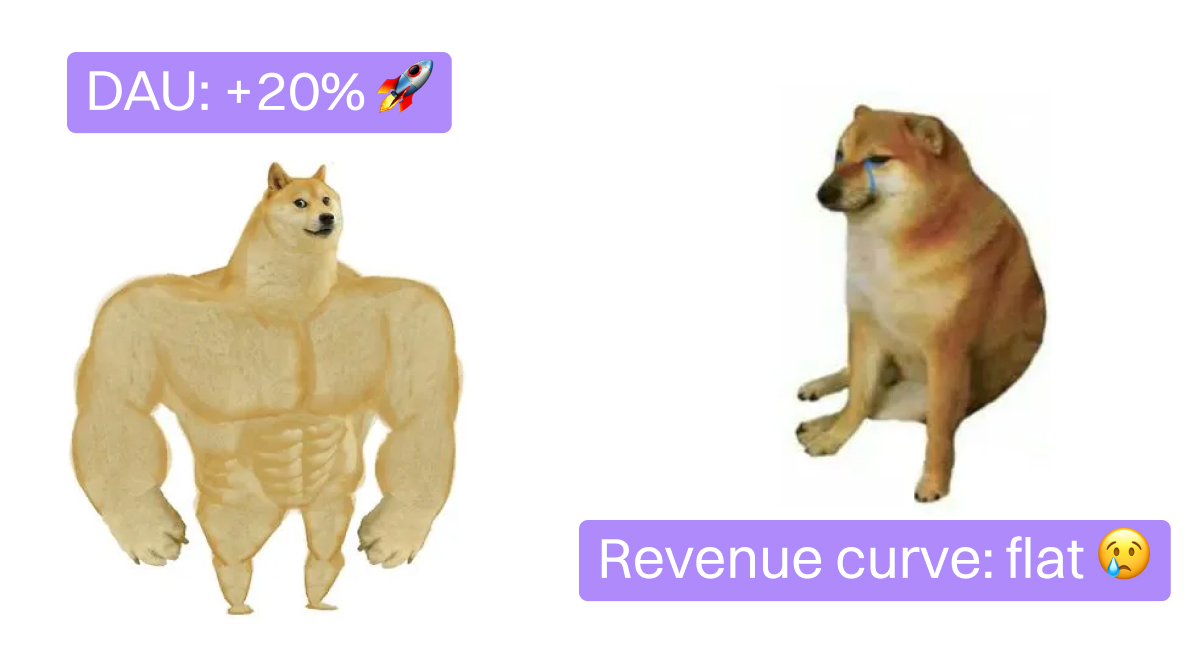
Strategic takeaway for mobile app publishers
Your most valuable users are those whose attention aligns closely with the core value your app delivers. Start by identifying high-focus segments based on behavior and context, not time spent. Then adapt your mobile app monetization mechanics per audience: more personalization, more localization, and sharper intent-matching offers. Revenue lifts when relevance meets focus.
Which app users drive higher revenue and how to spot them
Insight 50
Seven attention-driven segments identified; "interactivity enthusiasts" (16%) love games/sports/comedy, prefer endorsements.
Takeaway: Ideal for mobile gaming apps targeting competitive app users.
Insight 51
"Content lovers" (13%) spend 2.4x average on media, consume 1.7x more.
Takeaway: Apps should cater to their "love" intent with immersive, multi-format experiences.
Insight 52
"Community trendsetters" (10%) are extroverted, active on social, and enjoy ads.
Takeaway: Mobile social/gaming apps can leverage them for viral growth and shopping integrations.
Insight 53
"Mobile scrollers" (11%) are digitally savvy, cost-conscious, and prefer endless scrolls and large libraries.
Takeaway: Apps should optimize for phone-first, free/ad-supported models.
Insight 54
"Thrifty thinkers" (11%) seek knowledge via games/puzzles, risk-averse.
Takeaway: Mobile puzzle/educational apps can splurge on cultural tie-ins without heavy tracking.
Insight 55
"Digital traditionalists" (10%) enjoy new distribution but prefer pro content.
Takeaway: Mobile apps blending legacy (e.g., news) with digital can attract this older, trend-conscious group.
Insight 56
"Legacy holdouts" (29%) are wary of digital, prefer traditional.
Takeaway: Apps need simple, non-intrusive designs to convert them.
Insight 57
Millennials buy 70% more on social video than Gen Z.
Takeaway: Mobile social apps should enhance ad-to-purchase flows for this group.
Insight 58
Gen Z leads music commerce via streaming (50% more likely than millennials).
Takeaway: Mobile music apps can boost monetization with artist integrations and personalized shopping.
Insight 59
Interactivity enthusiasts overindex on console/PC/live sports.
Takeaway: Mobile versions should add betting/comedy to capture them.
Insight 60
Community trendsetters overindex on social focus (esp. TikTok).
Takeaway: Mobile short-video apps can target them for high-engagement content.
Insight 61
Mobile scrollers underindex on "hard to find content".
Takeaway: Apps with strong recommendations will retain them.
Insight 62
“Content lovers” enjoy ads 4.3x average.
Takeaway: Apps can monetize via tailored ads without alienating them.
Insight 63
Legacy holdouts least likely to buy from ads (0.3x average).
Takeaway: Apps targeting them should minimize ads.
Insight 64
Globally, "interactivity enthusiasts" largest in India (39%, mobile gaming focus).
Takeaway: Publishers should adapt for regional preferences.
Strategic takeaway for mobile app publishers
To grow revenue per user, shift your targeting from heavy usage to high-focus behavior. Look for signals of deep intent from new users, like consistent completion, interaction, or repeat views, and layer offers, features, or ads accordingly. Prioritize dynamic segmentation: today’s top user might not be tomorrow’s highest-value one unless their attention holds. Matching feature exposure to attention state is where mobile app revenue optimization starts to compound.
Product features and platform choices that shape monetization outcomes
Insight 65
Jobs-to-be-done: Mobile gaming primarily for "light entertainment/relaxation" (same value as social connection).
Takeaway: To increase value, shift toward "love" or "social" via updates.
Insight 66
Recommendation engines improve user focus by helping them find relevant content, with a 1.1% increase in their effectiveness leading to a 0.9% gain in focus.
Takeaway: Mobile apps, especially those with large content libraries, should implement highly effective algorithms to suggest personalized content, ensuring users stay engaged and attentive for longer periods.
Insight 67
Larger content volume correlates with higher attention.
Takeaway: Mobile gaming/streaming apps should expand catalogs without overwhelming app users.
Insight 68
Content based on popular intellectual property (IP), such as well-known movies, books, or franchises, sparks a strong 'love' intent where users feel a deep emotional connection.
Takeaway: Publishers can enhance the value of what users seek to achieve (job-to-be-done) by licensing major IPs, like blockbuster series or iconic characters, to create immersive experiences that keep users engaged and invested.
Insight 69
Sports/news genres drive 2x focus vs. others.
Takeaway: Mobile apps in these areas can command premium pricing.
Insight 70
Binge model preferred by 44%, but high-focus users like weekly releases (25% more).
Takeaway: Mobile apps should offer flexible release strategies.
Insight 71
Endless catalogs increase search time (60% more on streaming vs. cable).
Takeaway: Mobile apps need intuitive discovery to reduce friction.
Strategic takeaway for mobile app publishers
If attention is your growth engine, product design is your throttle. The way users discover, consume, and return to content sets the ceiling for monetization. Invest in features that build habit and deepen focus: evergreen libraries, adaptive recommendations, segment-based release pacing. And make churn reduction a core part of your mobile app monetization stack, alongside retention and engagement. Apps that build for attention flows outperform those chasing quick conversions.
See how leading mobile app publishers scale 10x–30x faster
If these insights reflect your challenges, you’re in good company. Many mobile publishers hit the same ceiling: strong engagement, high attention, but fragmented monetization. That’s exactly where Campaignswell steps in.
Campaignswell gives mobile publishers of subscription app the tools to turn creative, targeting, and monetization data into a predictable growth engine.
We help you move faster from insight to scale with predictive analytics suited for a paid app monetization model , ready-to-use performance systems, and deep visibility into what drives LTV across your user base.
Want to see what this looks like in action? Check out how teams like yours turned user signals into 10x+ growth in our latest case studies.

Co-founder & CEO at Campaignswell


